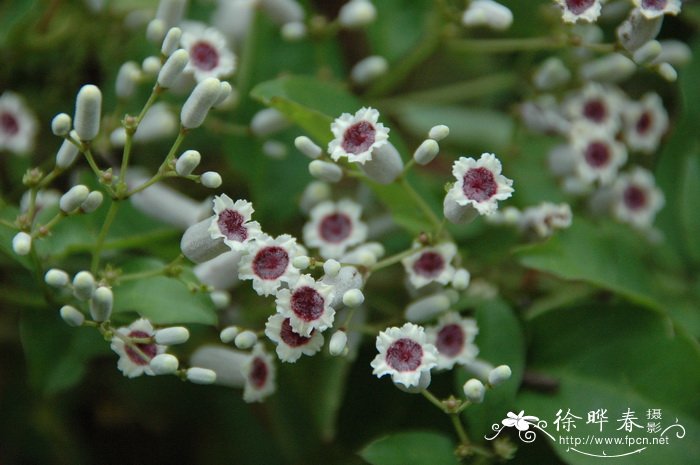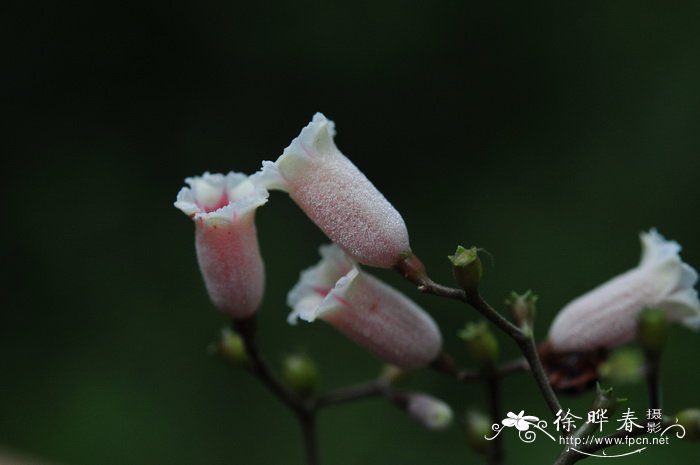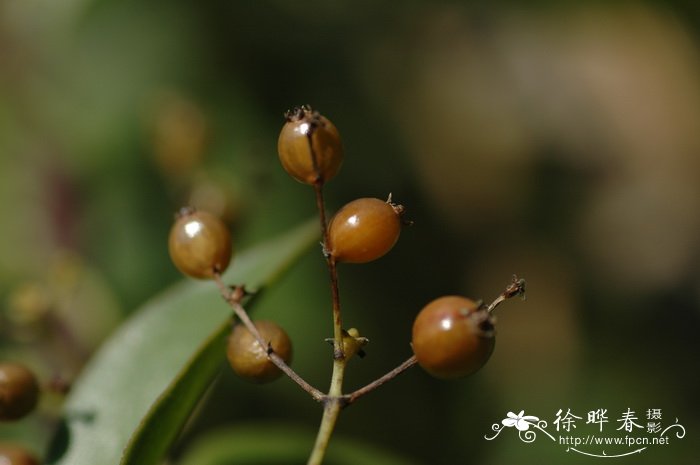鸡矢藤Paederia foetida
中文名(Chinese Name):鸡矢藤
学名(Scientific Name):Paederia foetida L.
英文名(English Common Name):stinkvine
别名(Chinese Common Name):牛皮冻
异名(Synonym):Paederia scandens (Lour.) Merr. Paederia scandens var. tomentosa (Bl.) Hand.-Mazz. Gentiana scandens Lour. Paederia tomentosa var. mairei (H. Lév.) H. Lév. Paederia chinensis Hance Paederia dunniana H. Lév. Paederia esquirolii H. Lév. Paederia tomentosa var. glabra Kurz Hondbesseion foetidum (L.) Kuntze Hondbesseion tomentosum (Blume) Kuntze Reussia sarmentosa Dennst. Paederia mairei H.Lév. Paederia ovata Miq. Paederia magnifolia Noronha Psychotria volubilis Roxb. ex Wight & Arn. Paederia barbulata Miq. Paederia scaberula Miq. Paederia longituba Nakai Paederia amboinensis Miq. Paederia corymbosa Noronha Paederia villosa Hayata Paederia sessiliflora Poir. Paederia prainii Gand. Paederia uraiensis Hayata Paederia scandens var. velutina (Nakai) Nakai Paederia tomentosa f. tenuissima Hayata Paederia chinensis var. maritima Koidz. Paederia chinensis var. megaphylla Koidz. Paederia chinensis f. microphylla Honda Paederia chinensis var. velutina Nakai Paederia foetida var. sessiliflora (Poir.) Baker Paederia scandens f. mairei (H.Lév.) Nakai Paederia scandens var. maritima Hara Paederia scandens var. mairei (H.Lév.) Hara Paederia scandens f. rubescens Asai Paederia scandens var. longituba (Nakai) Hara Paederia chinensis f. tenuissima Masam. Paederia scandens var. villosa (Hayata) Masam. Paederia chinensis var. angustifolia Nakai Paederia scandens f. microphylla (Honda) H.Hara Paederia scandens f. megaphylla (Koidz.) H.Hara Paederia scandens f. rubrae-stellaris Konta & S.Matsumoto Paederia foetida f. microphylla (Honda) Tsukaya, Imaichi & J.Yokoy. Apocynum foetidum Burm.f. Crawfurdia paniculata Griseb.
科属(Family & Genus):茜草科(Rubiaceae)鸡矢藤属
形态特征(Description):藤本,茎长3-5米,无毛或近无毛。叶对生,纸质或近革质,形状变化很大,卵形、卵状长圆形至披针形,长5-9 (15)厘米,宽1-4 (6)厘米,顶端急尖或渐尖,基部楔形或近圆或截平,有时浅心形,两面无毛或近无毛,有时下面脉腋内有束毛;侧脉每边4-6条,纤细;叶柄长1.5-7厘米;托叶长3-5毫米,无毛。圆锥花序式的聚伞花序腋生和顶生,扩展,分枝对生,末次分枝上着生的花常呈蝎尾状排列;小苞片披针形,长约2毫米;花具短梗或无;萼管陀螺形,长1-1.2毫米,萼檐裂片5,裂片三角形,长0.8-1毫米;花冠浅紫色,管长7-10毫米,外面被粉末状柔毛,里面被绒毛,顶部5裂,裂片长1-2毫米,顶端急尖而直,花药背着,花丝长短不齐。果球形,成熟时近黄色,有光泽,平滑,直径5-7毫米,顶冠以宿存的萼檐裂片和花盘;小坚果无翅,浅黑色。花期5-7月。
分布(Distribution):产我国中部以南地区,生于海拔200-2000米的山坡、林中、林缘、沟谷边灌丛中或缠绕在灌木上。朝鲜、日本、东南亚等地也有。
用途(Use):本种叶的形状和大小变异很大。根据中草药汇编,本种主治风湿筋骨痛、跌打损伤、外伤性疼痛、肝胆及胃肠绞痛、黄疽型肝炎、肠炎、痢疾、消化不良、小儿疳积、肺结核咯血、支气管炎、放射反应引起的白细胞减少症、农药中毒;外用治皮炎、湿疹、疮疡肿毒。
引自中国植物志英文版:FOC Vol. 19 Page 282, 283, 284, 285
Paederia foetida Linnaeus, Syst. Nat., ed. 12. 2: 189; Mant. Pl. 1: 52. 1767.
鸡矢藤 ji shi teng| Rubiaceae | Paederia
Gentiana scandens Loureiro; Paederia chinensis Hance; P. dunniana H. Léveillé; P. esquirolii H. Léveillé; P. laxiflora Merrill ex H. L. Li; P. mairei H. Léveillé; P. scandens (Loureiro) Merrill; P. scandens f. mairei (H. Léveillé) Nakai; P. scandens var. mairei (H. Léveillé) H. Hara; P. scandens var. tomentosa (Blume) Handel-Mazzetti; P. tomentosa Blume; P. tomentosa var. glabra Kurz; P. tomentosa var. mairei (H. Léveillé) H. Léveillé; P. stenophylla Merrill.
Vines, to 5 m; stems glabrous to densely puberulent, hirtellous, or pilosulous often becoming glabrescent, drying gray to brown. Leaves opposite or rarely ternate; petiole 0.5-9 cm, glabrous to densely hirtellous or pilosulous; blade drying papery to subleathery, ovate, ovate-oblong, lanceolate, lanceolate-elliptic, or elliptic, (1-)5-9(-21) × 1-4(-9) cm, adaxially glabrous to puberulent at least on principal veins, abaxially glabrous to puberulent, hirtellous, or strigillose at least on principal veins, base cuneate, rounded, truncate, or sometimes cordulate to cordate, margins flat, apex acute or acuminate; secondary veins 4-6 pairs; stipules generally persistent, triangular to ovate, 1.5-6 mm, obtuse to acute, acuminate, or rarely bifid. Inflorescences axillary and/or terminal, paniculate, thyrsiform, corymbiform, or cymose, pyramidal to rounded, 5-100 cm, branched to 2-5 orders with higher order axes dichotomous or often scorpioid, hirtellous, strigillose, or glabrous, pedunculate; bracts lanceolate to triangular, 0.8-3 mm; pedicels to 1.5 mm. Flowers sessile to pedicellate in dichotomous to scorpioid, lax to somewhat congested cymules. Calyx glabrous to densely puberulent; hypanthium portion turbinate to ellipsoid, 0.8-2 mm; limb deeply lobed; lobes triangular, 0.4-1 mm. Corolla pale purple, grayish pink, lilac, or grayish white, funnelform, outside densely mealy puberulent or mealy tomentulose; tube (5-)7-10(-17) × 2-6 mm, without slits; lobes broadly triangular to ovate, 1-2 mm, acute. Fruit globose, 4-7 × 4-7 mm, glabrescent, drying gray to yellow; pyrenes concavo-convex to plano-convex. Fl. May-Oct, fr. Jul-Dec.
Forests, forest margins, thickets in ravines and on mountain slopes; 200-2000 m. Anhui, Fujian, Gansu, Guangdong, Guangxi, Guizhou, Hainan, Henan, Hubei, Jiangsu, Jiangxi, Shandong, Shanxi, Sichuan, Taiwan, Yunnan, Zhejiang [Bangladesh, Bhutan, Borneo, Cambodia, India, Indonesia, Japan, N Korea, Laos, Malaysia, Myanmar, Nepal, Philippines, Thailand, Vietnam; also occasionally cultivated, and naturalized in United States (Florida) and perhaps Sri Lanka].
Paederia foetida is naturalized in a few places around the world and apparently quite weedy wherever it grows; in particular, it has been reported as an adventive and sometimes a problem weed in Florida, where it is called "skunk vine."
Puff (Opera Bot. Belg. 3: 207-292. 1991) substantially changed and clarified the application of this name; see the discussion under the genus above. Paederia foetida as circumscribed by Puff (and here) is widespread and morphologically widely variable but with continuous morphological variation, as documented in detail (loc. cit.: 223-224, f. 4, f. 5). W. C. Ko (in FRPS 71(2): 118-119. 1999) recognized two varieties within this species (treated as P. scandens), with the stems and leaves glabrous or subglabrous in var. scandens and subglabrous to pubescent in var. tomentosa; Ko reported var. scandens from throughout the range of this species in China and var. tomentosa only from "Jiangxi, Guangdong, Hong Kong, Hainan, Guangxi, Yunnan." Puff synonymized these based on his conclusion that pubescence varies continuously within this species and thus does not distinguish separate evolutionary lineages.
Puff synonymized Paederia stenophylla with P. foetida, and this name is provisionally listed in synonymy here. The name P. stenophylla seems to have been applied by W. C. Ko (loc. cit.: 115) at least in part to plants that Puff treated as P. pertomentosa rather than P. foetida, and Puff reported that he did not see the type of P. stenophylla; this situation may deserve re-consideration, but that work is outside the scope of this current project.
The name Paederia dunniana from Guizhou was apparently overlooked by Puff; this was reported by Lauener and Ferguson (Notes Roy. Bot. Gard. Edinburgh 32: 112. 1972) to be a synonym of "P. scandens," which corresponds to P. foetida here, and this name is accordingly synonymized here provisionally.



(责任编辑:徐晔春)
学名(Scientific Name):Paederia foetida L.
英文名(English Common Name):stinkvine
别名(Chinese Common Name):牛皮冻
异名(Synonym):Paederia scandens (Lour.) Merr. Paederia scandens var. tomentosa (Bl.) Hand.-Mazz. Gentiana scandens Lour. Paederia tomentosa var. mairei (H. Lév.) H. Lév. Paederia chinensis Hance Paederia dunniana H. Lév. Paederia esquirolii H. Lév. Paederia tomentosa var. glabra Kurz Hondbesseion foetidum (L.) Kuntze Hondbesseion tomentosum (Blume) Kuntze Reussia sarmentosa Dennst. Paederia mairei H.Lév. Paederia ovata Miq. Paederia magnifolia Noronha Psychotria volubilis Roxb. ex Wight & Arn. Paederia barbulata Miq. Paederia scaberula Miq. Paederia longituba Nakai Paederia amboinensis Miq. Paederia corymbosa Noronha Paederia villosa Hayata Paederia sessiliflora Poir. Paederia prainii Gand. Paederia uraiensis Hayata Paederia scandens var. velutina (Nakai) Nakai Paederia tomentosa f. tenuissima Hayata Paederia chinensis var. maritima Koidz. Paederia chinensis var. megaphylla Koidz. Paederia chinensis f. microphylla Honda Paederia chinensis var. velutina Nakai Paederia foetida var. sessiliflora (Poir.) Baker Paederia scandens f. mairei (H.Lév.) Nakai Paederia scandens var. maritima Hara Paederia scandens var. mairei (H.Lév.) Hara Paederia scandens f. rubescens Asai Paederia scandens var. longituba (Nakai) Hara Paederia chinensis f. tenuissima Masam. Paederia scandens var. villosa (Hayata) Masam. Paederia chinensis var. angustifolia Nakai Paederia scandens f. microphylla (Honda) H.Hara Paederia scandens f. megaphylla (Koidz.) H.Hara Paederia scandens f. rubrae-stellaris Konta & S.Matsumoto Paederia foetida f. microphylla (Honda) Tsukaya, Imaichi & J.Yokoy. Apocynum foetidum Burm.f. Crawfurdia paniculata Griseb.
科属(Family & Genus):茜草科(Rubiaceae)鸡矢藤属
形态特征(Description):藤本,茎长3-5米,无毛或近无毛。叶对生,纸质或近革质,形状变化很大,卵形、卵状长圆形至披针形,长5-9 (15)厘米,宽1-4 (6)厘米,顶端急尖或渐尖,基部楔形或近圆或截平,有时浅心形,两面无毛或近无毛,有时下面脉腋内有束毛;侧脉每边4-6条,纤细;叶柄长1.5-7厘米;托叶长3-5毫米,无毛。圆锥花序式的聚伞花序腋生和顶生,扩展,分枝对生,末次分枝上着生的花常呈蝎尾状排列;小苞片披针形,长约2毫米;花具短梗或无;萼管陀螺形,长1-1.2毫米,萼檐裂片5,裂片三角形,长0.8-1毫米;花冠浅紫色,管长7-10毫米,外面被粉末状柔毛,里面被绒毛,顶部5裂,裂片长1-2毫米,顶端急尖而直,花药背着,花丝长短不齐。果球形,成熟时近黄色,有光泽,平滑,直径5-7毫米,顶冠以宿存的萼檐裂片和花盘;小坚果无翅,浅黑色。花期5-7月。
分布(Distribution):产我国中部以南地区,生于海拔200-2000米的山坡、林中、林缘、沟谷边灌丛中或缠绕在灌木上。朝鲜、日本、东南亚等地也有。
用途(Use):本种叶的形状和大小变异很大。根据中草药汇编,本种主治风湿筋骨痛、跌打损伤、外伤性疼痛、肝胆及胃肠绞痛、黄疽型肝炎、肠炎、痢疾、消化不良、小儿疳积、肺结核咯血、支气管炎、放射反应引起的白细胞减少症、农药中毒;外用治皮炎、湿疹、疮疡肿毒。
引自中国植物志英文版:FOC Vol. 19 Page 282, 283, 284, 285
Paederia foetida Linnaeus, Syst. Nat., ed. 12. 2: 189; Mant. Pl. 1: 52. 1767.
鸡矢藤 ji shi teng| Rubiaceae | Paederia
Gentiana scandens Loureiro; Paederia chinensis Hance; P. dunniana H. Léveillé; P. esquirolii H. Léveillé; P. laxiflora Merrill ex H. L. Li; P. mairei H. Léveillé; P. scandens (Loureiro) Merrill; P. scandens f. mairei (H. Léveillé) Nakai; P. scandens var. mairei (H. Léveillé) H. Hara; P. scandens var. tomentosa (Blume) Handel-Mazzetti; P. tomentosa Blume; P. tomentosa var. glabra Kurz; P. tomentosa var. mairei (H. Léveillé) H. Léveillé; P. stenophylla Merrill.
Vines, to 5 m; stems glabrous to densely puberulent, hirtellous, or pilosulous often becoming glabrescent, drying gray to brown. Leaves opposite or rarely ternate; petiole 0.5-9 cm, glabrous to densely hirtellous or pilosulous; blade drying papery to subleathery, ovate, ovate-oblong, lanceolate, lanceolate-elliptic, or elliptic, (1-)5-9(-21) × 1-4(-9) cm, adaxially glabrous to puberulent at least on principal veins, abaxially glabrous to puberulent, hirtellous, or strigillose at least on principal veins, base cuneate, rounded, truncate, or sometimes cordulate to cordate, margins flat, apex acute or acuminate; secondary veins 4-6 pairs; stipules generally persistent, triangular to ovate, 1.5-6 mm, obtuse to acute, acuminate, or rarely bifid. Inflorescences axillary and/or terminal, paniculate, thyrsiform, corymbiform, or cymose, pyramidal to rounded, 5-100 cm, branched to 2-5 orders with higher order axes dichotomous or often scorpioid, hirtellous, strigillose, or glabrous, pedunculate; bracts lanceolate to triangular, 0.8-3 mm; pedicels to 1.5 mm. Flowers sessile to pedicellate in dichotomous to scorpioid, lax to somewhat congested cymules. Calyx glabrous to densely puberulent; hypanthium portion turbinate to ellipsoid, 0.8-2 mm; limb deeply lobed; lobes triangular, 0.4-1 mm. Corolla pale purple, grayish pink, lilac, or grayish white, funnelform, outside densely mealy puberulent or mealy tomentulose; tube (5-)7-10(-17) × 2-6 mm, without slits; lobes broadly triangular to ovate, 1-2 mm, acute. Fruit globose, 4-7 × 4-7 mm, glabrescent, drying gray to yellow; pyrenes concavo-convex to plano-convex. Fl. May-Oct, fr. Jul-Dec.
Forests, forest margins, thickets in ravines and on mountain slopes; 200-2000 m. Anhui, Fujian, Gansu, Guangdong, Guangxi, Guizhou, Hainan, Henan, Hubei, Jiangsu, Jiangxi, Shandong, Shanxi, Sichuan, Taiwan, Yunnan, Zhejiang [Bangladesh, Bhutan, Borneo, Cambodia, India, Indonesia, Japan, N Korea, Laos, Malaysia, Myanmar, Nepal, Philippines, Thailand, Vietnam; also occasionally cultivated, and naturalized in United States (Florida) and perhaps Sri Lanka].
Paederia foetida is naturalized in a few places around the world and apparently quite weedy wherever it grows; in particular, it has been reported as an adventive and sometimes a problem weed in Florida, where it is called "skunk vine."
Puff (Opera Bot. Belg. 3: 207-292. 1991) substantially changed and clarified the application of this name; see the discussion under the genus above. Paederia foetida as circumscribed by Puff (and here) is widespread and morphologically widely variable but with continuous morphological variation, as documented in detail (loc. cit.: 223-224, f. 4, f. 5). W. C. Ko (in FRPS 71(2): 118-119. 1999) recognized two varieties within this species (treated as P. scandens), with the stems and leaves glabrous or subglabrous in var. scandens and subglabrous to pubescent in var. tomentosa; Ko reported var. scandens from throughout the range of this species in China and var. tomentosa only from "Jiangxi, Guangdong, Hong Kong, Hainan, Guangxi, Yunnan." Puff synonymized these based on his conclusion that pubescence varies continuously within this species and thus does not distinguish separate evolutionary lineages.
Puff synonymized Paederia stenophylla with P. foetida, and this name is provisionally listed in synonymy here. The name P. stenophylla seems to have been applied by W. C. Ko (loc. cit.: 115) at least in part to plants that Puff treated as P. pertomentosa rather than P. foetida, and Puff reported that he did not see the type of P. stenophylla; this situation may deserve re-consideration, but that work is outside the scope of this current project.
The name Paederia dunniana from Guizhou was apparently overlooked by Puff; this was reported by Lauener and Ferguson (Notes Roy. Bot. Gard. Edinburgh 32: 112. 1972) to be a synonym of "P. scandens," which corresponds to P. foetida here, and this name is accordingly synonymized here provisionally.
(责任编辑:徐晔春)
踩一下[1]

顶一下[11]